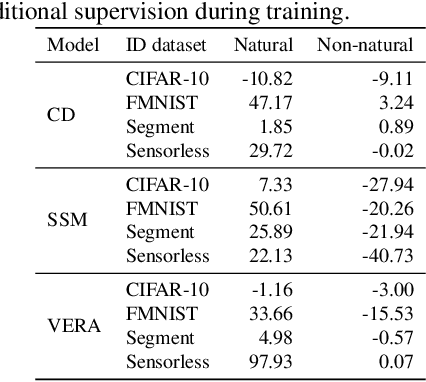On Out-of-distribution Detection with Energy-based Models
Paper and Code
Jul 03, 2021



Several density estimation methods have shown to fail to detect out-of-distribution (OOD) samples by assigning higher likelihoods to anomalous data. Energy-based models (EBMs) are flexible, unnormalized density models which seem to be able to improve upon this failure mode. In this work, we provide an extensive study investigating OOD detection with EBMs trained with different approaches on tabular and image data and find that EBMs do not provide consistent advantages. We hypothesize that EBMs do not learn semantic features despite their discriminative structure similar to Normalizing Flows. To verify this hypotheses, we show that supervision and architectural restrictions improve the OOD detection of EBMs independent of the training approach.
 Add to Chrome
Add to Chrome Add to Firefox
Add to Firefox Add to Edge
Add to Edge